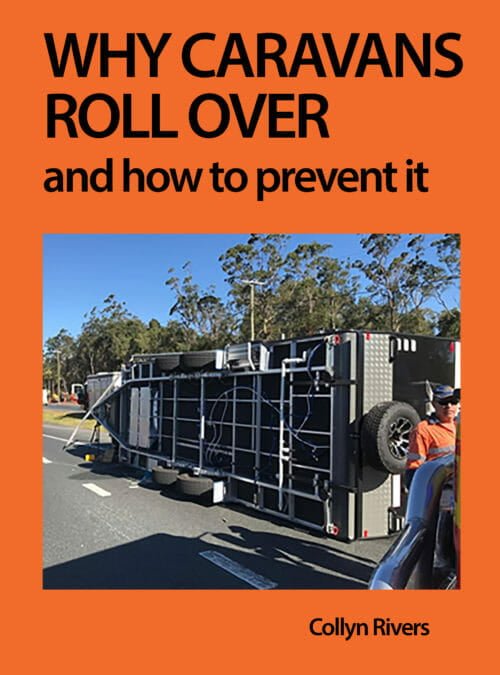Travel Trailer Length and Stability
Travel trailer length and stability interrelate. The tow vehicle should weigh at least the same as the travel trailer. Excess travel trailer weight is undesirable. Excess travel trailer length, however, is more significant. Limit travel trailer length, and weight at either end.
![[cara_up2] Length and Stability 1 Travel trailer length and stability - this is a very long caravan](https://rvbooks.com.au/wp-content/uploads/2021/03/LongCaravan-e1628473304220.jpg)
Extreme travel trailer rear-end weight is particularly undesirable. Many travel trailers have about 110 lbs (about 50 kg) of spare wheels on their rear wall. The effect of that weight when pitching or swaying is many times more. If at all feasible, relocate those spare wheels onto a cradle underneath the travel trailer‘s chassis, or carry in the tow vehicle. Also, why two spare wheels? Tow vehicles normally have only one.
Travel trailer length and stability interact
A travel trailer towed via an overhung hitch is fundamentally unstable. Ample tow ball mass (e.g. 10%) is vital. There is nevertheless a speed at which travel trailers will sway. Friction and other mechanisms dampen that sway. They may not do so sufficiently in an emergency swerve to prevent the rig jack-knifing. This is particularly an issue in the USA. People there claim to tow long and heavy ‘travel trailers’ behind often lighter vehicles. Some do so at a claimed 160 km/h (100 mph). That is virtually a recipe for swaying. Or worse.
Travel trailer length and stability – how to ensure it first and every time
It is possible to design (and load) a travel trailer such that it will normally only sway at speeds as high as 160 km (100 mph) but that speed is better avoided. All this, and a great deal more is explained in RV Books’ top-selling Why Caravans Roll Over – and how to prevent it .
RV Books also publishes How to Choose and Buy an RV, Travel trailer & Motorhome Electrics, The Camper Trailer Book, Solar That Really Works (solar power for RVs) and Solar Success (for homes and properties).




